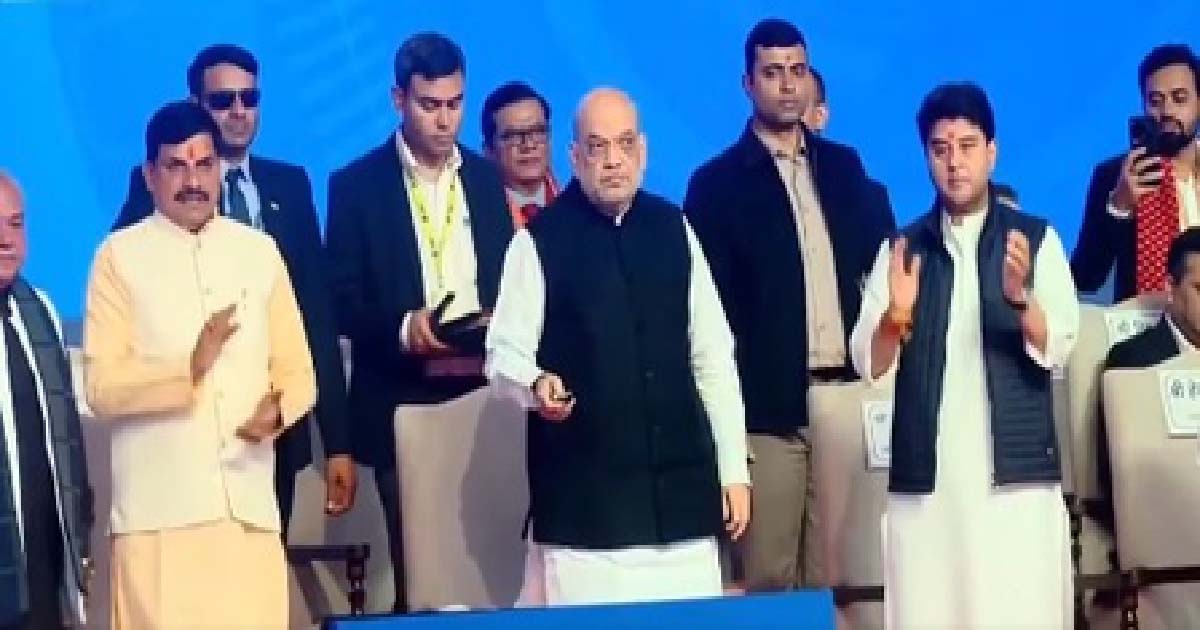Crime
Now, internet services snapped in Rajasthan’s Hanumangarh

After Karauli, Jodhpur and Bhilwara, internet services have been suspended in Hanumangarh district of Rajasthan following communal tension in Nohar town here after a Vishwa Hindu Parishad leader was attacked on Wednesday night.
He was referred to Bikaner where his condition is stated to be critical.
Officials confirmed that a few unidentified people attacked VHP leader Satveer Saharan on Wednesday night injuring him seriously. He was rushed to the Government District Hospital, Hanumangarh, in a critical condition from where he was referred to Bikaner after his condition deteriorated.
As the news spread, angry masses blocked the road. The police reached the spot and opened the jam. Two people were reportedly rounded up by the police.
Meanwhile, officials said that the situation in Hanumangarh is currently under control. However, the administration has suspended internet service in Hanumangarh district.
Heavy police have been deputed at the site to avert any untoward incident.
Crime
Palghar Crime: ATM Card Swapping Fraud Cracked In 24 Hours; Pelhar Police Arrest 25-Year-Old Accused, Recover Cash And Vehicle

Palghar, Maharashtra, Dec 25: Pelhar Police have arrested one accused involved in an ATM card swapping fraud and recovered cash and a vehicle used in the crime, successfully cracking the case within 24 hours of its registration.
The incident occurred on December 21, 2025, around 5:00 pm, when the complainant, Ramashankar Devkinandan Tiwari (53), a resident of Nalasopara East, visited an Axis Bank ATM at Vasai Phata to withdraw cash.
According to police, three unidentified men entered the ATM booth and engaged the complainant in conversation, claiming that their transaction had failed. Taking advantage of the distraction, the accused allegedly swapped the complainant’s ATM card through sleight of hand and handed him a different Canara Bank ATM card before leaving the spot.
The accused later used the complainant’s ATM card at another location to withdraw ₹50,000 from his bank account, thereby committing financial fraud.
Following a complaint lodged by the victim, Pelhar Police registered a case on December 22, 2025, under relevant sections of the Bharatiya Nyaya Sanhita.
During the investigation, the Crime Detection Unit examined CCTV footage from the ATM and nearby areas, which revealed that the accused used a Maruti Suzuki WagonR car.
Tracing the vehicle’s ownership and conducting technical analysis led the police to apprehend the accused, identified as Mohammad Afzal Mohammad Aslam (25), a resident of Ulwe, Navi Mumbai.
During interrogation, the accused confessed to committing the offence along with two accomplices. Police recovered ₹40,000 in cash from the accused, part of the defrauded amount, and seized the car used in the crime. The case was solved within 24 hours of registration.
The search for the remaining two absconding accused is ongoing. The arrested accused has been remanded to police custody until December 27, 2025.
Crime
ED raids Ruchi Group’s Indore, Mumbai premises; freezes assets, seizes cash in bank fraud case

Indore/Mumbai, Dec 25: The Directorate of Enforcement (ED), Indore Zonal Office, has conducted extensive search operations under the Prevention of Money Laundering Act (PMLA), 2002, at multiple locations in Indore and Mumbai, the investigation agency said on Thursday.
The raids on December 23 targeted premises linked to the Ruchi Group in connection with ongoing investigations into alleged bank fraud cases.
The probe stems from multiple FIRs registered by the Central Bureau of Investigation (CBI), Bhopal, against several Ruchi Group entities. These include M/s Ruchi Global Ltd. (now renamed M/s Agrotrade Enterprises Ltd.), M/s Ruchi Acroni Industries Ltd. (now M/s Steeltech Resources Ltd.), and M/s RSAL Steel Pvt. Ltd. (now M/s LGB Steel Pvt. Ltd.), it said.
The companies, promoted by the late Kailash Chandra Shahra and Umesh Shahra, are accused of orchestrating large-scale bank frauds through fund diversion, siphoning, and accounting manipulations, resulting in substantial wrongful losses to public sector banks.
The ED officials revealed that the investigation uncovered a sophisticated conspiracy involving the creation of numerous shell entities, the agency said.
These were used for round-tripping transactions, where spurious Letters of Credit and Cash Credit facilities were manipulated to divert funds for private gain.
Bogus sales and purchases were recorded, and deliberate losses inflicted to siphon off loan amounts obtained ostensibly for legitimate business purposes, it said.
Proceeds of crime generated from these frauds were allegedly concealed and layered to disguise their illicit origins.
During the searches, authorities froze bank balances exceeding Rs 20 lakh belonging to the accused persons and their family members. Additionally, cash amounting to over Rs 23 lakh was seized, along with significant incriminating documents and digital devices that establish the roles of the accused in the fraud, said the agency.
This action revives scrutiny on the Ruchi Group, which has faced prior allegations of financial irregularities.
Earlier CBI probes, dating back to 2021, had flagged similar issues in group companies, including a Rs 188 crore fraud case involving a bank consortium.
The current ED operation signals intensified efforts to trace and recover laundered assets, it said.
Further investigation is progressing, with sources indicating potential attachments of properties and deeper probes into the beneficiaries of the diverted funds.
Business
HM Shah lays foundation stone for 1,655 industrial units ensuring Rs 2 lakh crore investment in MP

Gwalior, Dec 25: Union Home and Cooperation Minister Amit Shah delivered an inspiring address at the ‘Abhyudaya Madhya Pradesh Growth Summit’ here on Thursday, marking the 101st birth anniversary of former Prime Minister and Bharat Ratna recipient Atal Bihari Vajpayee.
Speaking on the theme ‘Investment to Employment – Atal’s Resolve, a Bright Madhya Pradesh’, HM Shah hailed the state’s rapid transformation under the double-engine government, declaring that Madhya Pradesh is emerging as the growth engine of ‘Viksit Bharat’.
HM Shah lavished praise on Chief Minister Mohan Yadav for pioneering initiatives aimed at balanced regional development across the state.
He highlighted CM Yadav’s innovative approach of organising regional investment promotion events and ground-breaking ceremonies in every division, ensuring equitable growth and unlocking the untapped potential of all areas.
“Chief Minister Mohan Yadav has taken thoughtful steps to establish a strong foundation for all-round development through his regional investment committees,” he said, adding that these efforts surpass even the energetic pace set by previous long-serving BJP Chief Minister Shivraj Singh Chouhan.
The Home Minister emphasised the critical importance of symmetrical industrial establishment to leverage Madhya Pradesh’s strategic geographical location.
He pointed to the traditional strength of cotton production in the Malwa and Gwalior-Chambal regions, noting that declining farmer incomes due to unfair prices could be reversed by setting up processing and allied industries locally. This would minimise transportation costs, make cotton farming profitable again, and connect seamlessly to markets in Delhi, western states, and nearby districts.
HM Shah described the day’s massive investment push – with foundation stones laid for 1,655 industrial units worth over Rs 2 lakh crore, expected to create 193,000 jobs – as a fitting tribute to former Prime Minister Vajpayee’s vision of good governance and national progress.
Held in Vajpayee’s birthplace, the summit, he said, embodied the late leader’s ideology of self-reliance, development, and inclusive growth, giving it a grand resonance on this auspicious occasion.
HM Shah expressed hope for continued central support, promising that true welfare stems from aligning with Prime Minister Narendra Modi’s vision for a prosperous India. The event, attended by prominent industrialists and cabinet ministers, reinforced Madhya Pradesh’s commitment to converting investments into widespread employment and regional prosperity.
-

 Crime3 years ago
Crime3 years agoClass 10 student jumps to death in Jaipur
-

 Maharashtra1 year ago
Maharashtra1 year agoMumbai Local Train Update: Central Railway’s New Timetable Comes Into Effect; Check Full List Of Revised Timings & Stations
-

 Maharashtra1 year ago
Maharashtra1 year agoMumbai To Go Toll-Free Tonight! Maharashtra Govt Announces Complete Toll Waiver For Light Motor Vehicles At All 5 Entry Points Of City
-

 Maharashtra1 year ago
Maharashtra1 year agoFalse photo of Imtiaz Jaleel’s rally, exposing the fooling conspiracy
-

 National News1 year ago
National News1 year agoMinistry of Railways rolls out Special Drive 4.0 with focus on digitisation, cleanliness, inclusiveness and grievance redressal
-

 Maharashtra1 year ago
Maharashtra1 year agoMaharashtra Elections 2024: Mumbai Metro & BEST Services Extended Till Midnight On Voting Day
-

 National News1 year ago
National News1 year agoJ&K: 4 Jawans Killed, 28 Injured After Bus Carrying BSF Personnel For Poll Duty Falls Into Gorge In Budgam; Terrifying Visuals Surface
-

 Crime1 year ago
Crime1 year agoBaba Siddique Murder: Mumbai Police Unable To Get Lawrence Bishnoi Custody Due To Home Ministry Order, Says Report






















